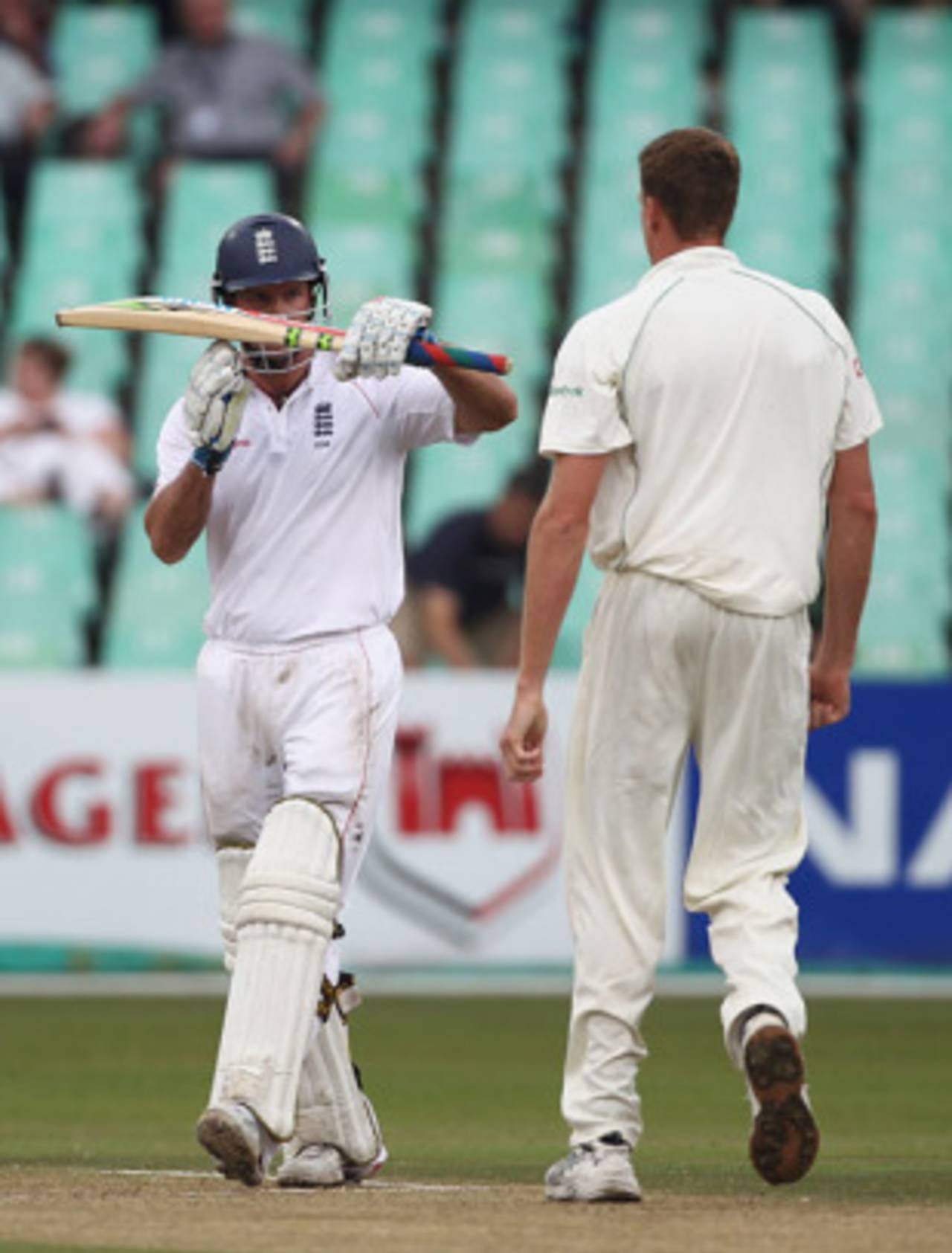How to survive the review system
No rude gestures, no trust, no sweat: a handy guide to the UDRS for cricketers everywhere

T is for third umpire: Andrew Strauss observes due etiquette while submitting a petition for a review • Getty Images
The UDRS has been brought in to correct obvious mistakes, like Nathan Bracken's hair. The word obvious has different connotations for different people. Obvious can mean, "Hmmm, I'm not sure, eeny meeny miny moe" for one umpire, and for others it means, "I need to be able to see that a truck can drive between bat and ball."
If Asad Rauf or Daryl Harper are in the chair, you know any review could come back. It is always worth rolling the dice. If you have someone like Amiesh Saheba in the chair, he is a stickler for enforcing the letter of the law and that might bum you out; steer clear of hopeful reviews with him.
Don't think of Hotspot as the enemy, think of it as a parental figure: show it what you want it to see and hide the rest. If you play and miss at a ball, manoeuvre your edge towards the camera. If you do nick one, twist the bat away from Hotspot, rest the bat between your legs and assume the ridin'-a-pony stance.
The days of leaning on your bat and staring into space are gone, my friends. Non-strikers are now integral cogs in the UDRS universe. They must become umpires, checking for no-balls, looking at where the ball has pitched, and keeping an eye out for faint edges. They must also try and work out what each umpire's idea of the word obvious is, so the team management can start a database.
In life and cricket. I'm a bowler and I think everything is out when I am bowling. I've seen Anil Kumble, as trustworthy as any man in the world of cricket, appeal like he has seen the plumbest decision of all time, for a ball that wouldn't have hit a 17th stump. So you can't trust them with reviews. Of course keepers are all shady. The slips are usually snoozing. Mid-on is a bit slow, and mid-off doesn't care. I suggest point decides on what to review.
The gesture of the referral is not meant to be crude, but if you do it in an aggressive way it can be off-putting. If you're batting you'll have gloves on, so no stray fingers will be aimed at anyone, but be careful of this if you are in the fielding side. Keep it calm and smiley, and make sure your eyes say, "Yes I'm reviewing it, but I respect your umpiring and hope you're having a nice day".
Try not to talk about how rubbish the original decision was. Umpires are only human, mostly. They understand that you may want to review the decision, but they may not want to hear that you think their decision was the worst one since the lbw in the second tied Test. Try talking about other topics: like, what Lindsay Lohan is up to, your favourite scenes from The Hangover, and what products Shah Rukh Khan uses to make his hair so shiny and fresh.
Don't worry too much about it. Nothing with the acronym UDRS is really ever going to last. They'll have to change it eventually. Perhaps to Conceptual Review Agreement Protocol.
Jarrod Kimber, the mind responsible for cricketwithballs.com, is an Australian writer based in London. His new book is now on sale